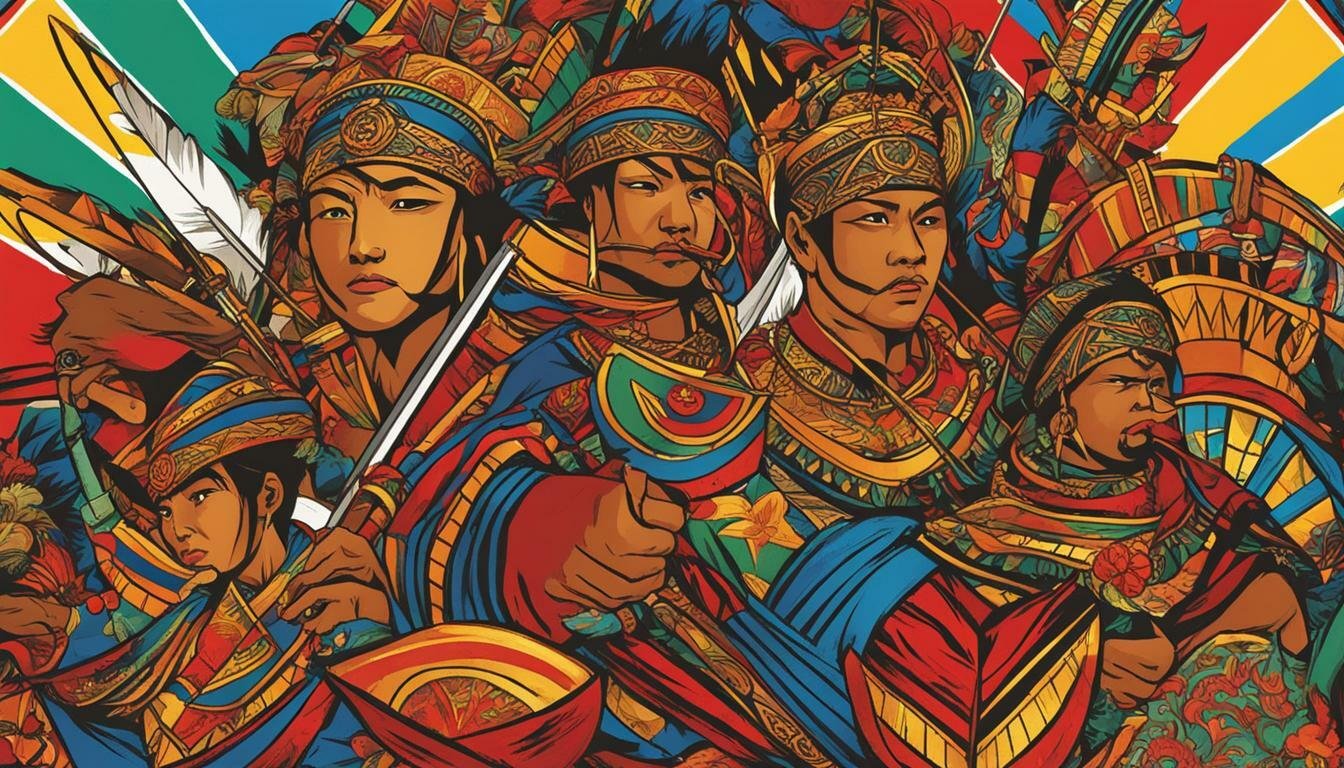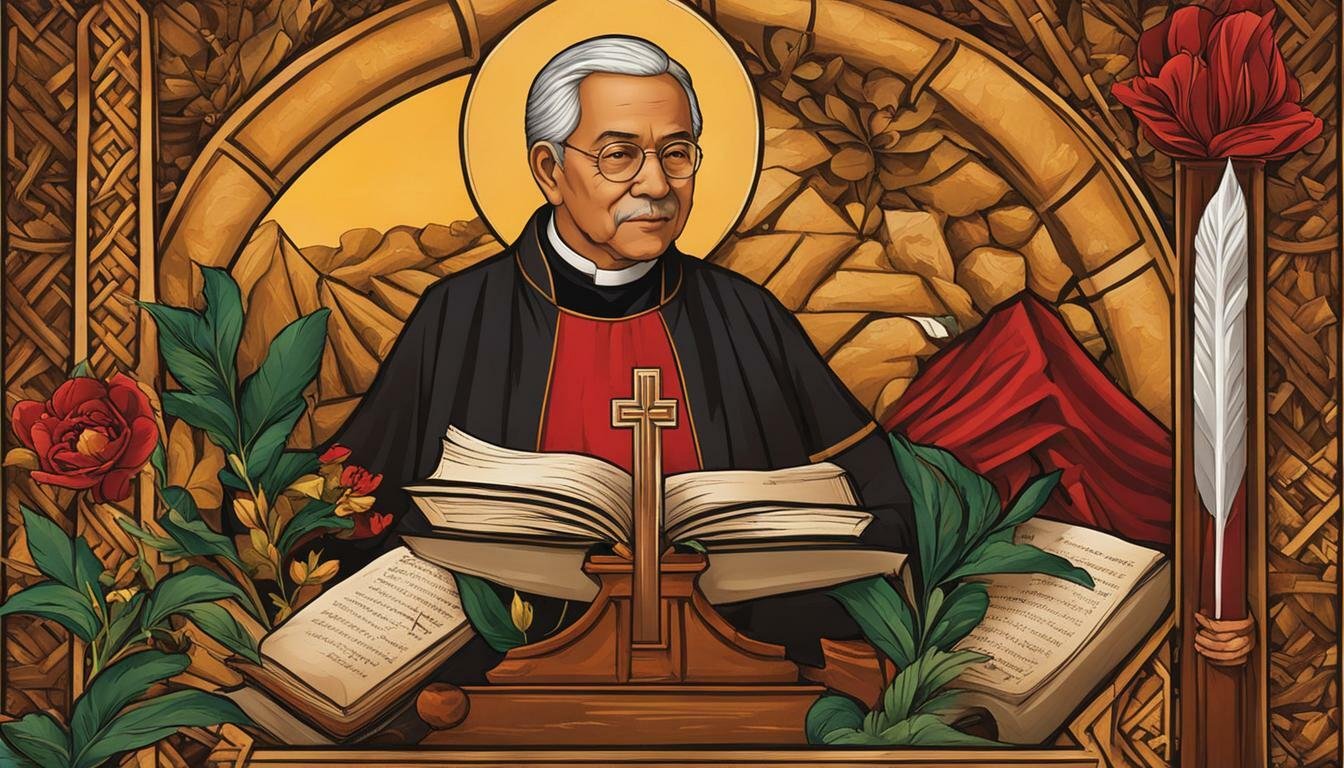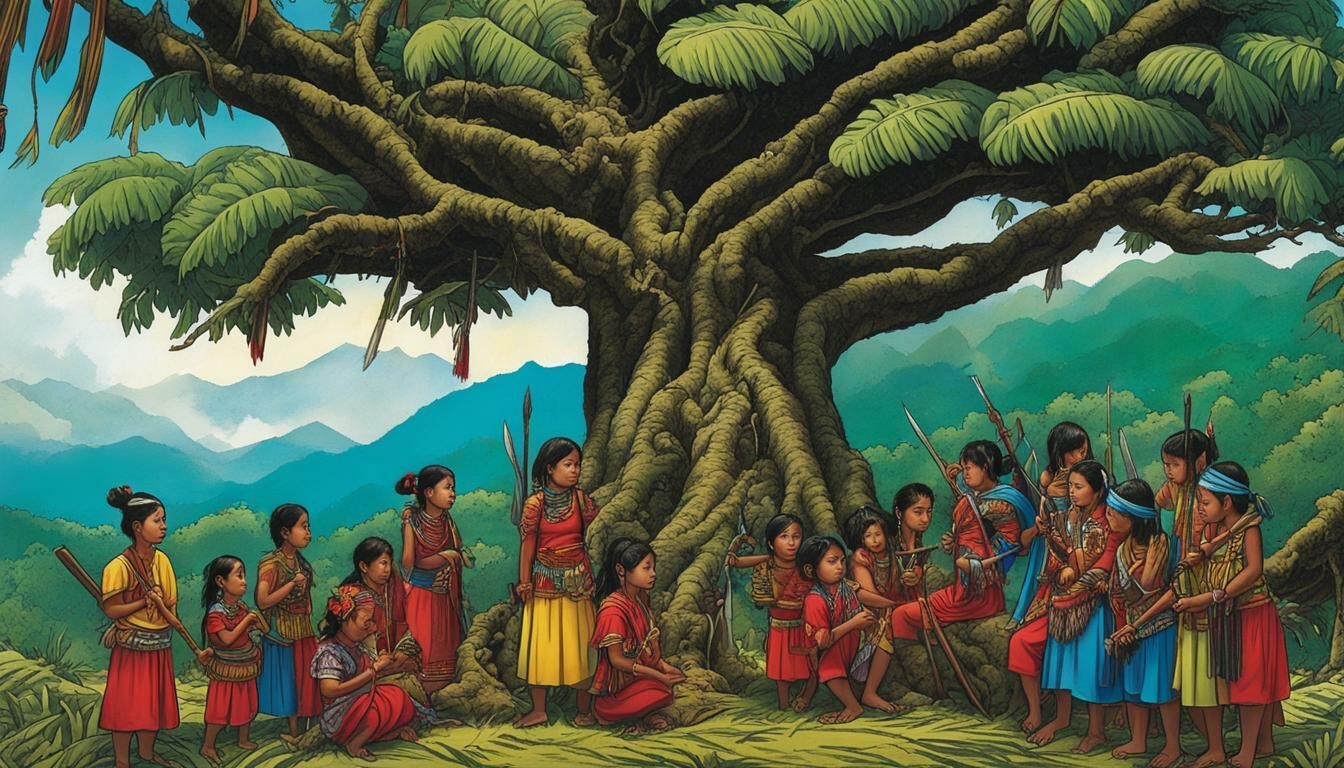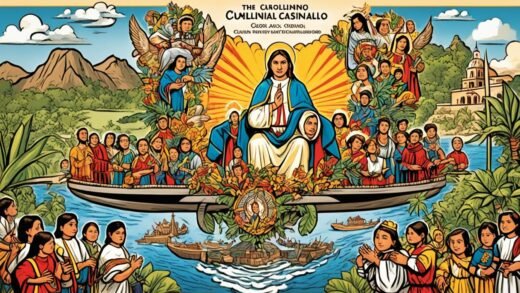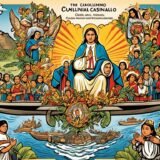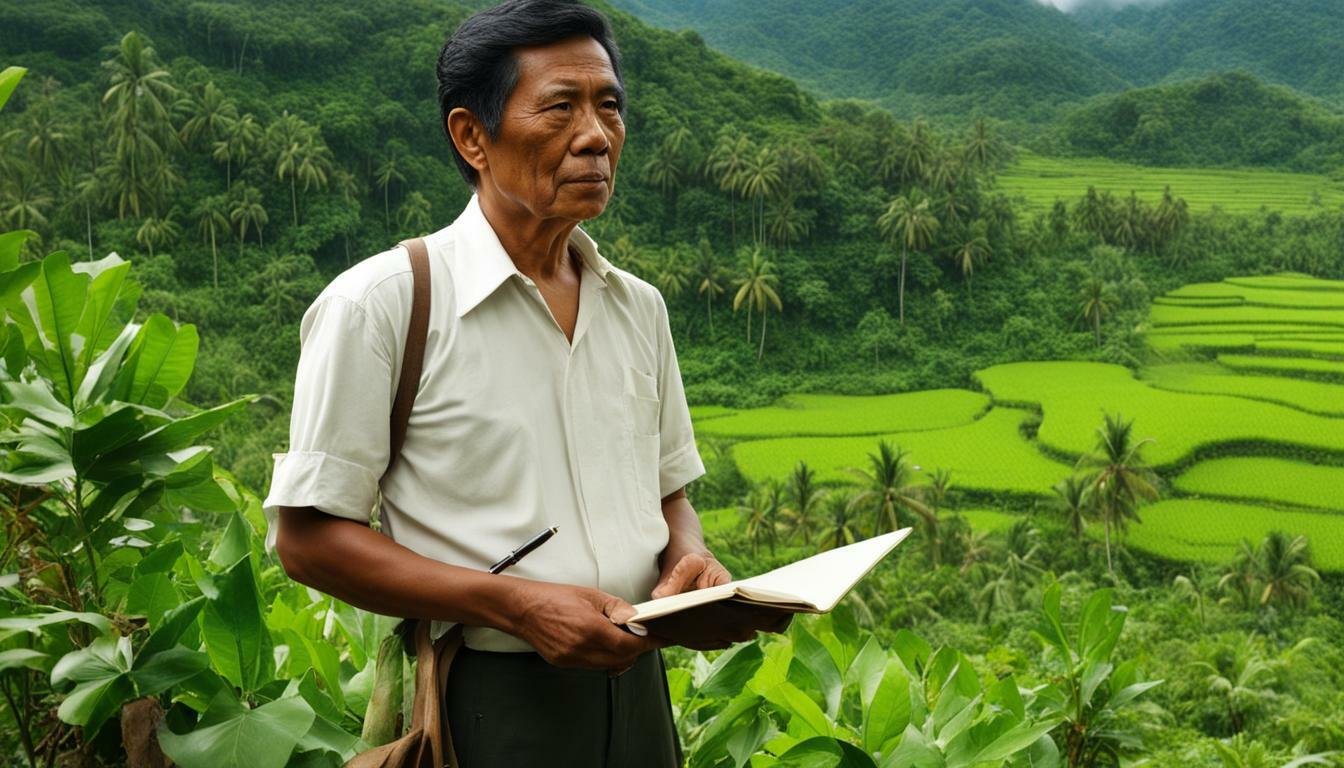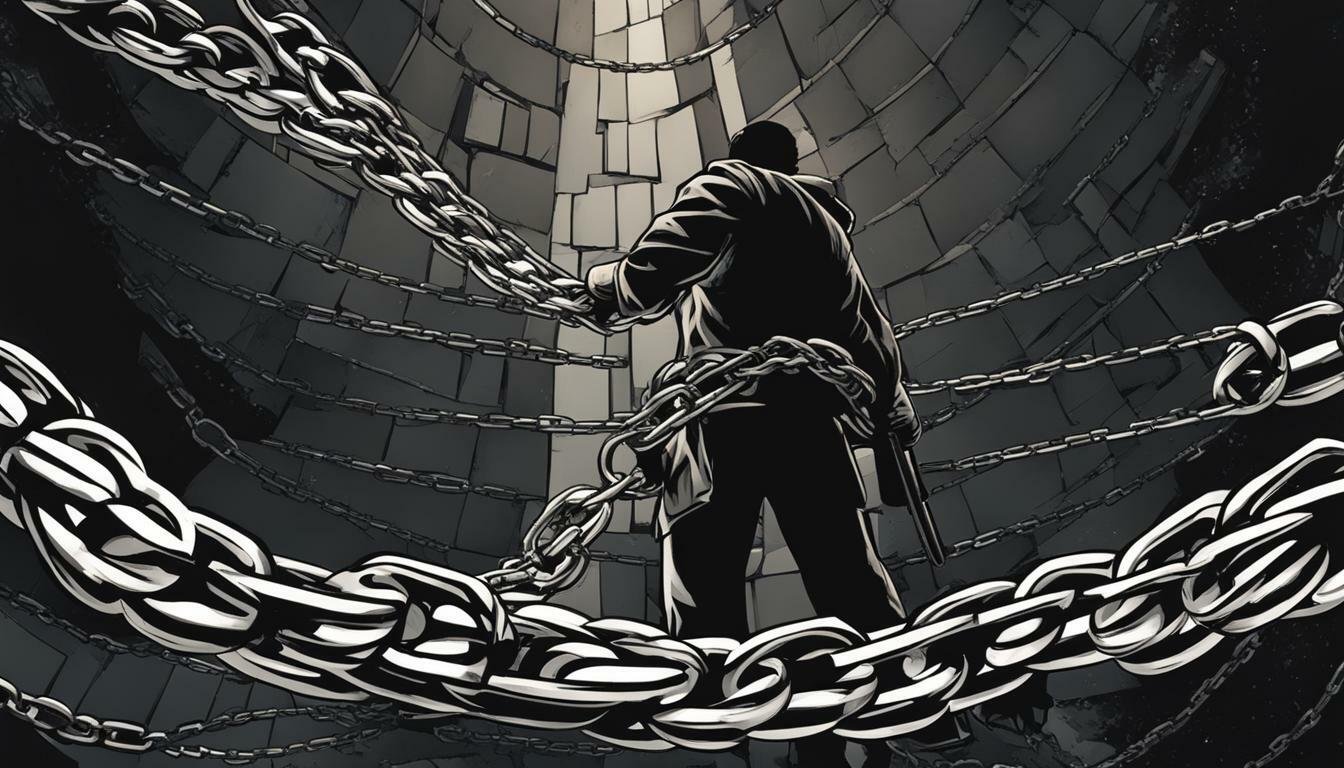Visayan Language
The Visayan Language, also known as Cebuano, is a major language spoken in the Visayan islands, parts of Mindanao, and other regions of the Philippines. It belongs to the Austronesian language family, specifically the Malayo-Polynesian group of languages. With approximately 15.8 million speakers, Cebuano is the second most spoken language in the Philippines, following Tagalog.
- Visayan Language, also known as Cebuano, is widely spoken in the Visayan islands, Mindanao, and other parts of the Philippines.
- It is a member of the Austronesian language family, specifically the Malayo-Polynesian group of languages.
- Cebuano has approximately 15.8 million speakers, making it the second most spoken language in the Philippines.
- The language has three vowel phonemes and 16 consonant phonemes.
- Cebuano vocabulary includes words of Austronesian origin, as well as borrowings from Spanish, Chinese, Arabic, and English.
History and Cultural Significance
The Visayan Language has deep historical and cultural significance, playing a pivotal role in the identity and heritage of the Visayan people. With its origins dating back thousands of years, Cebuano, as it is also known, has shaped the cultural landscape of the Visayan islands, parts of Mindanao, and other regions of the Philippines. It is a testament to the rich history and diverse heritage of the Filipino people.
As one of the major languages of the Philippines, the Visayan Language has been a means of communication and expression for generations. It has served as a vehicle for preserving folklore, traditions, and oral histories, allowing the stories of the Visayan people to be passed down from one generation to the next. Through the language, the collective memory and cultural values of the Visayan community have been preserved and celebrated.
“Language is the reflection of a people’s soul,” said Dr. Jose Rizal, a Filipino nationalist and writer. This sentiment holds true for the Visayan Language, which not only reflects the soul of the Visayan people but also connects them to their roots and to one another. It is a language that binds communities together, fostering a sense of belonging, pride, and shared cultural identity.
Furthermore, the Visayan Language has been instrumental in shaping the cultural landscape of the Philippines as a whole. Its influence extends beyond its speaker community, permeating various aspects of Filipino culture, including literature, music, and the arts. Through its rich linguistic heritage, the Visayan Language has left an indelible mark on the cultural fabric of the country, contributing to its diversity and vibrancy.
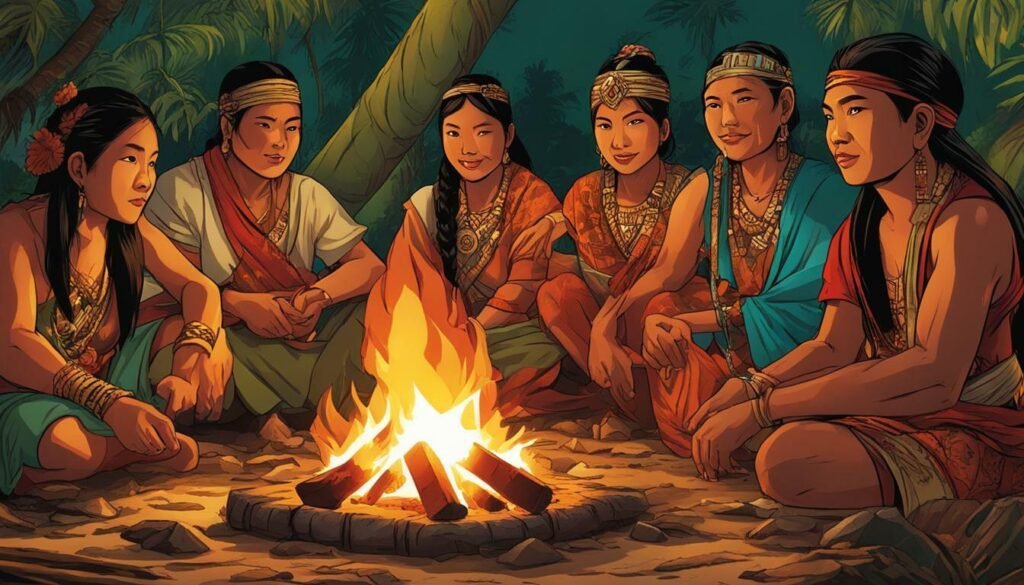
| Language Variety/Dialect | Region |
|---|---|
| Cebuano | Cebu, Bohol, Southern Leyte |
| Hiligaynon | Iloilo, Negros Occidental, Capiz |
| Waray | Eastern Visayas Region |
| Surigaonon | Surigao del Norte, Surigao del Sur |
| Butuanon | Agusan del Norte, Agusan del Sur |
The Visayan Language is not a monolithic entity, but rather encompasses various language varieties and dialects. Table 1 provides an overview of some of the major language varieties and their associated regions within the Visayan Language family. These dialects exhibit regional variations in vocabulary, pronunciation, and grammar, reflecting the linguistic diversity of the Visayan-speaking communities.
Linguistic Features
The Visayan Language is characterized by its distinct phonemes, grammar, and its affiliation with the Austronesian language family. Cebuano, also known as Bisaya or Binisaya, has around 15.8 million speakers and is primarily spoken in the Visayan islands, parts of Mindanao, and other regions of the Philippines.
In terms of phonemes, Cebuano has three vowel phonemes: /a/, /i/, and /u/. It also has 16 consonant phonemes, including /p/, /t/, /k/, /b/, /d/, and /g/. The pronunciation of these phonemes can vary slightly between different dialects and regions.
The grammar of Cebuano follows the patterns typical of Austronesian languages. Nouns are marked for number, with the plural typically indicated by adding the particle “mga” before the noun. Possession is marked by prepositions, such as “sa” (of) or “nang” (belonging to). Verbs in Cebuano are marked for focus, indicating whether the action is directed towards the subject (actor focus) or the object (object focus).
Cebuano vocabulary is influenced by various languages and cultures. It includes words of Austronesian origin, reflecting the language’s indigenous roots. Additionally, Cebuano has borrowed words from Spanish, Chinese, Arabic, and English, reflecting the historical influences and interactions with these cultures.
| Phoneme | Example |
|---|---|
| /a/ | balay (house) |
| /i/ | sakit (pain) |
| /u/ | buta (blind) |
| /p/ | pula (red) |
| /t/ | tindahan (store) |
| /k/ | kuradang (dance) |
| /b/ | bag-ong (new) |
| /d/ | dako (big) |
| /g/ | gugma (love) |
The Visayan Language, with its unique phonemes and grammar, showcases the rich linguistic heritage of the Philippines. Its affiliation with the Austronesian language family reveals its deep-rooted connections to other Southeast Asian languages. The diverse vocabulary, influenced by various cultures throughout history, reflects the dynamic nature of Cebuano as a living language.
Austronesian Languages
The Austronesian language family is one of the largest language families in the world, encompassing languages spoken across Southeast Asia, the Pacific, and even parts of Madagascar. It includes well-known languages such as Malay, Indonesian, Tagalog, and Hawaiian, among many others. These languages share similarities in terms of phonetics, grammar, and vocabulary, highlighting the interconnectedness of the cultures and societies that speak them.
- Cebuano, with its distinct phonemes and grammar, plays a crucial role in the linguistic landscape of the Philippines.
- Its widespread usage across the Visayan islands and other regions demonstrates its regional importance.
- The efforts to preserve and promote the usage of Cebuano contribute to the cultural heritage of the language and its speakers.
The Visayan Language, with its diverse linguistic features and cultural significance, continues to shape the identity of the Visayan people and the wider Filipino community.
Language Varieties and Dialects
The Visayan Language encompasses various language varieties and dialects, reflecting the linguistic diversity across the regions where it is spoken. These variations in the Visayan Language are influenced by factors such as geography, history, and cultural interactions. While Cebuano serves as the standard dialect, there are several other prominent regional varieties that have distinct features and nuances.
One of the most well-known dialects is Hiligaynon, primarily spoken in Western Visayas. It shares similarities with Cebuano but also has its own unique vocabulary and grammatical structures. Another significant dialect is Waray-Waray, spoken in the Eastern Visayas region. It has notable differences in terms of pronunciation and vocabulary compared to Cebuano.
Other notable Visayan dialects include Boholano, spoken in Bohol; Aklanon, spoken in Aklan; and Ilonggo, spoken in Iloilo. Each dialect showcases its own linguistic peculiarities, making the Visayan Language a rich tapestry of diverse linguistic expressions.
Visayan Language Dialects
Here is a table summarizing some of the prominent Visayan Language dialects:
| Dialect | Region |
|---|---|
| Hiligaynon | Western Visayas |
| Waray-Waray | Eastern Visayas |
| Boholano | Bohol |
| Aklanon | Aklan |
| Ilonggo | Iloilo |
Each dialect has its own unique vocabulary, idiomatic expressions, and cultural significance. While these dialects are mutually intelligible to some extent, there may be variations in pronunciation, vocabulary, and grammar that distinguish them from one another.

The linguistic diversity within the Visayan Language is a testament to the rich cultural heritage of the Visayan people. It highlights the intricate tapestry of languages and dialects that exist within the Philippines, contributing to the country’s linguistic and cultural mosaic.
Vocabulary and Language Influences
The Visayan Language boasts a diverse vocabulary, incorporating words of Austronesian origin as well as borrowings from Spanish, Chinese, Arabic, and English. This linguistic fusion reflects the rich history and cultural influences that have shaped the Visayan people and their language over the centuries.
One of the significant influences on the Visayan vocabulary is Spanish. During the Spanish colonial period, many Spanish words were integrated into the Visayan Language. These borrowings have contributed to the language’s extensive vocabulary, especially in domains such as religion, food, and culture. For example, the Visayan word for “church” is “simbahan,” derived from the Spanish word “iglesia.”
| Language Influence | Example Words |
|---|---|
| Spanish | simbahan (church), kan-on (rice) |
| Chinese | ngo (I), bain (white) |
| Arabic | aman (peace), habibi (beloved) |
| English | kompyuter (computer), selpon (cellphone) |
Chinese and Arabic have also contributed to the Visayan vocabulary. Due to trade and cultural interactions, Visayan has incorporated Chinese words for numerals, kinship terms, and ingredients used in Filipino cuisine. Arabic influence is evident in words related to Islamic culture and religion, reflecting the historical interactions between the Visayan-speaking regions and Muslim traders.
English borrowings in the Visayan Language are widespread due to the Philippines’ historical ties with the United States. Many English words have been assimilated, particularly in everyday conversations, technology, and popular culture. For example, “kompyuter” (computer) and “selpon” (cellphone) are common Visayan words derived from their English counterparts.
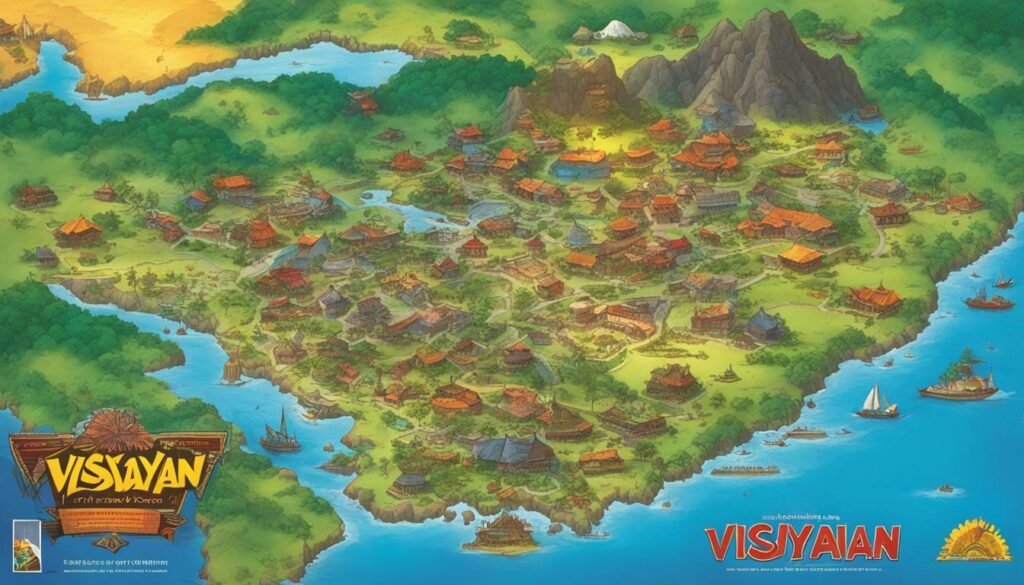
“Visayan language vocabulary is a testament to the linguistic diversity and historical influences that have shaped the language. From Spanish to Chinese, Arabic to English, the Visayan Language embraces these loanwords, creating a rich tapestry of words that reflects the cultural heritage of the Visayan people.”
Overall, the Visayan Language’s vocabulary is a fascinating blend of indigenous Austronesian words and borrowed terms from various languages. This linguistic mosaic reflects the cultural and historical connections between the Visayan-speaking regions and other parts of the world. The diverse vocabulary of the Visayan Language continues to evolve and adapt as the language thrives in its regional importance and cultural heritage.
Writing System
The Visayan Language is predominantly written using the Latin alphabet, although it also has an ancient script called Baybayin, which has a more decorative usage in modern times. The Latin alphabet used for writing Cebuano consists of 28 letters, including the standard 26 letters of the English alphabet with the addition of the letters “ng” and “ñ” to represent unique sounds in the Visayan language. This writing system allows for efficient and clear communication, and is widely used in educational materials, literature, newspapers, and online content.
However, Baybayin holds a special place in the cultural heritage of the Visayan people. It is an ancient script that was used before the arrival of the Spanish colonizers in the Philippines. Baybayin consists of 17 characters representing syllables, and is written in a left-to-right direction. Today, Baybayin is primarily used for decorative purposes, such as in artwork, tattoos, and traditional calligraphy.
| Latin Alphabet | Baybayin |
|---|---|
| A | ᜀ |
| B | ᜊ |
| C | ᜅ |
| D | ᜇ |
| E | ᜁ |
| F | ᜓ |
While the Latin alphabet is the primary writing system used for the Visayan Language today, the preservation of Baybayin is an important part of the cultural heritage of the Visayan people. It serves as a reminder of the rich history and traditions of the region, and contributes to the overall appreciation and celebration of the Visayan Language.
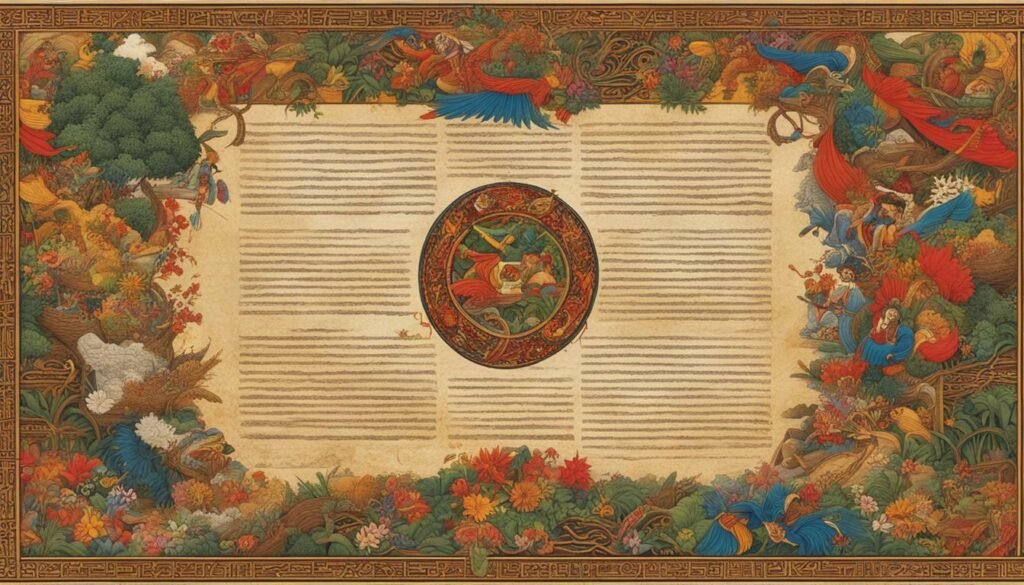
- Baybayin.com – Learn more about the ancient script of Baybayin and its significance.
- Omniglot – Visayan (Bisayan) – Explore the writing system and alphabet used for the Visayan Language.
Number of Speakers and Regional Importance
The Visayan Language boasts a considerable number of speakers, with approximately 15.8 million people using Cebuano as their primary language, making it the second most spoken language in the Philippines.
Cebuano is primarily spoken in the Visayan islands, parts of Mindanao, and other regions of the Philippines. It holds significant regional importance, as it is the native language of the Visayan people, who make up a large portion of the country’s population. Cebuano is also widely understood and spoken in neighboring regions, further expanding its reach and influence.
The language plays a vital role in everyday life, serving as a means of communication in homes, schools, government offices, businesses, and media. It is woven into the cultural fabric of the Visayan people, shaping their traditions, expressions, and identity. The prevalence of Cebuano in various domains of society highlights its cultural and linguistic significance.
| Key Points | Details |
|---|---|
| Number of Speakers | Approximately 15.8 million |
| Regional Importance | Spoken in Visayan islands, parts of Mindanao, and other regions of the Philippines; widely understood in neighboring areas |
| Usage | Commonly used in homes, schools, government offices, businesses, and media |
| Cultural Significance | Integral to Visayan traditions, expressions, and identity |
With its large number of speakers and regional importance, the Visayan Language, or Cebuano, continues to thrive and play a central role in the lives of the Visayan people and the broader Philippine society.
Cultural Heritage and Preservation Efforts
The Visayan Language holds immense cultural heritage, and various initiatives have been undertaken to preserve and promote its significance in the modern world. With a vibrant history dating back centuries, the language is deeply intertwined with the identity and traditions of the Visayan people. Efforts are being made to ensure its preservation and to raise awareness about its importance.
One of the key initiatives is the establishment of language preservation programs and institutions. These organizations aim to document and record the diverse linguistic variations and dialects within the Visayan Language, ensuring that the richness of the language is not lost over time. Through linguistic research and documentation, valuable linguistic resources are being preserved for future generations to study and appreciate.
In addition to language documentation, cultural festivals and events are organized to celebrate the Visayan Language and its heritage. These occasions provide platforms for the revitalization and promotion of the language through performances, exhibitions, and interactive activities. Such events also serve as a means to educate the younger generation about their linguistic and cultural roots, enabling them to embrace and take pride in their heritage.
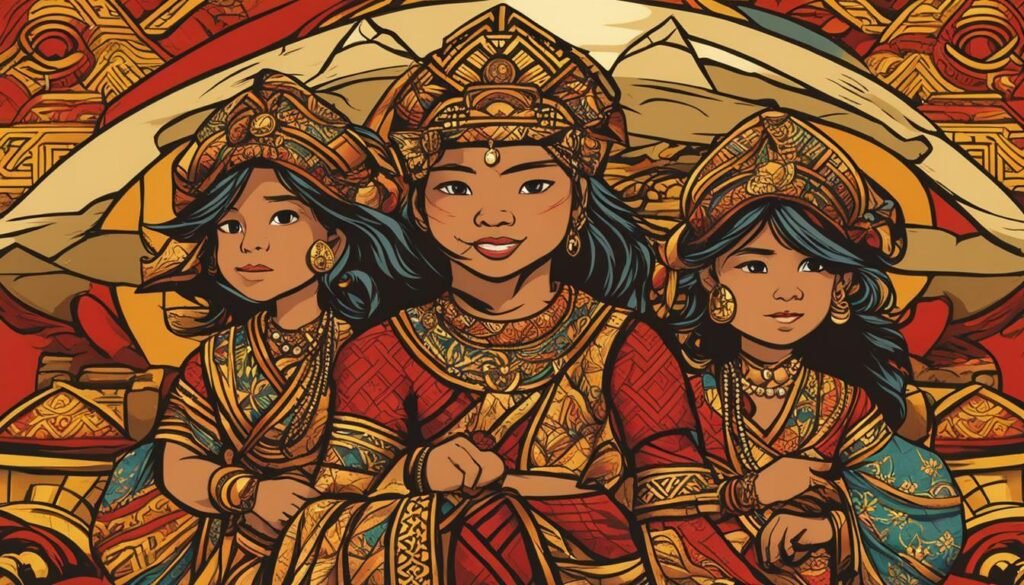
Furthermore, educational initiatives are being implemented to ensure the inclusion of the Visayan Language in schools and learning institutions. By incorporating the language into curricula, students are given the opportunity to learn and appreciate the significance of their native tongue. This not only helps in preserving the language but also contributes to the overall cultural enrichment of the community.
Preserving a Language, Preserving a Heritage
The preservation of the Visayan Language goes beyond mere linguistic endeavors. It is a means of safeguarding a cultural heritage that has shaped the identity and traditions of the Visayan people for generations. Through language preservation programs, cultural festivals, and educational initiatives, the importance of the Visayan Language is being recognized and embraced, ensuring its continuity and relevance in the modern world.
| Key Cultural Heritage and Preservation Efforts |
|---|
| Language preservation programs |
| Cultural festivals and events |
| Educational initiatives in schools |
Conclusion
In conclusion, the Visayan Language, also known as Cebuano, is a significant language in the Philippines, with rich linguistic diversity, cultural heritage, and a large number of speakers. As a member of the Malayo-Polynesian group of languages within the Austronesian language family, Cebuano holds a prominent place in the linguistic landscape of the country.
With approximately 15.8 million speakers, Cebuano is the second most spoken language in the Philippines, just after Tagalog. Its influence extends across the Visayan islands, parts of Mindanao, and various regions throughout the country. This widespread usage demonstrates the importance and relevance of Cebuano in everyday communication and cultural expression.
The linguistic features of Cebuano, including its consonant and vowel phonemes, reflect its roots within the Austronesian language family. Nouns marked for number, possession indicated by prepositions, and verb focus markers contribute to the grammar structure of Cebuano. The vocabulary of Cebuano encompasses words of Austronesian origin, as well as borrowings from Spanish, Chinese, Arabic, and English, resulting in a rich and diverse lexicon.
Cebuano is primarily written using the Latin alphabet, which facilitates its accessibility and ease of use. Additionally, the ancient script of Baybayin, although mainly used for decorative purposes today, adds a historical and cultural dimension to the writing system of the Visayan Language. Together, these writing systems enable the preservation and dissemination of Cebuano literature, poetry, and other forms of written expression.
FAQ
Q: What is the Visayan language?
A: The Visayan language, also known as Cebuano, is a major language spoken in the Visayan islands, parts of Mindanao, and other regions of the Philippines.
Q: How many speakers does Cebuano have?
A: Cebuano has around 15.8 million speakers and is the second most spoken language in the Philippines after Tagalog.
Q: What are the phonemes in Cebuano?
A: Cebuano has three vowel phonemes and 16 consonant phonemes.
Q: What is the grammar of Cebuano like?
A: The grammar of Cebuano is similar to other Austronesian languages, with nouns marked for number, possession marked by prepositions, and verb focus markers.
Q: What languages have influenced Cebuano vocabulary?
A: Cebuano vocabulary includes words of Austronesian origin, as well as borrowings from Spanish, Chinese, Arabic, and English.
Q: How is Cebuano written?
A: Cebuano is written using the Latin alphabet, but it also has an ancient script called the Baybayin, which is used mainly for decorative purposes today.

